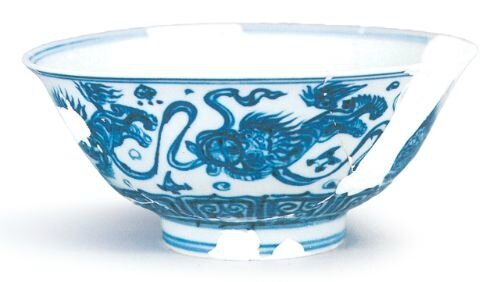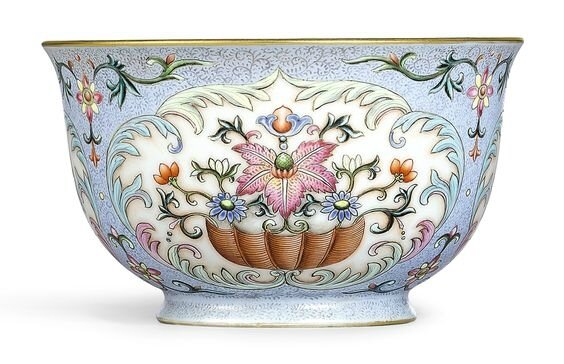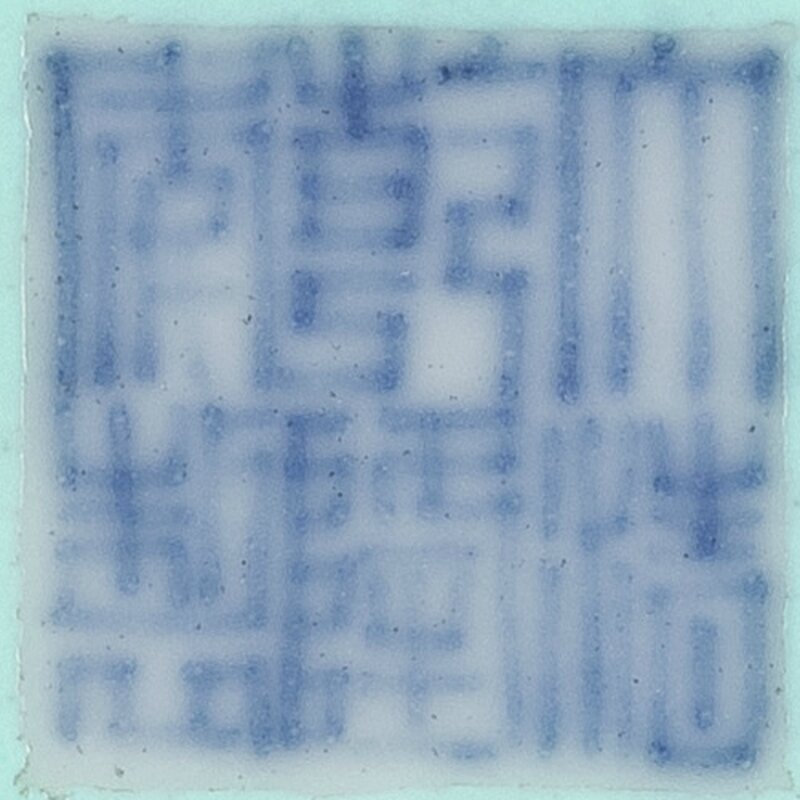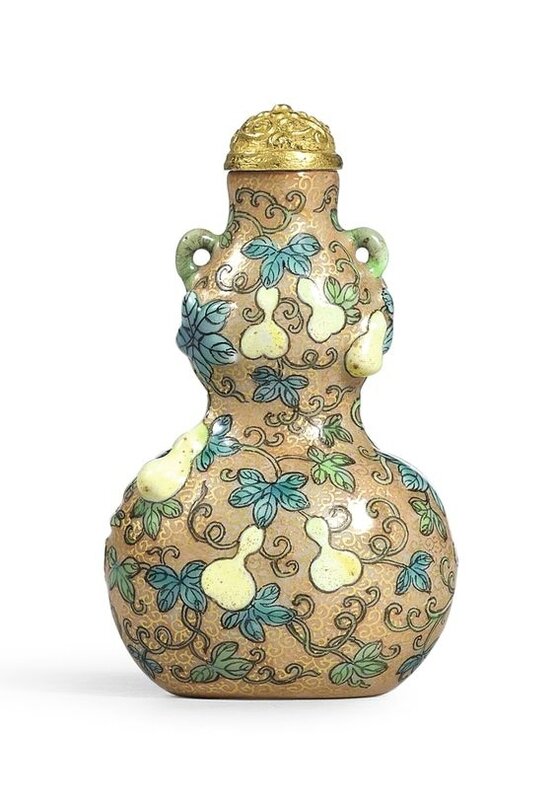![An extremely rare set of ten famille-rose bowls with views of Jiangxi, Marks and period of Jiaqing (1796-1820)]()
![1]()
![2]()
![3]()
![4]()
![4 bis]()
![5]()
![6]()
![7]()
![8]()
![9]()
![10]()
![11]()
![12]()
![13]()
![14]()
![15]()
![16]()
![17]()
![18]()
![19]()
![20]()
Lot 3630. An extremely rare set of ten famille-rose bowls with views of Jiangxi, Marks and period of Jiaqing (1796-1820), 14.5 to 14.7 cm, 5 3/4 in. Estimate 8,000,000 — 12,000,000 HKD. Lot sold 11,500,000 HKD (1,391,636 EUR) (1,479,935 USD). Photo: Sotheby's
each rounded bowl with widely everted, conical sides faintly flared at the rim, resting on a slightly tapering foot, the exterior depicting different landscape scenes painted in famille-rose enamels, with inscriptions in black enamel to identify the sites, above a narrow lotus scroll border in blue enamel on a band of white enamel all within underglaze-blue double lines circling the rim and foot, the interior decorated in iron red with a branch of prunus and one of finger citron under a pine tree in the centre, within a ruyi border reserved in white on red at the rim
Provenance: Acquired in China prior to 1936, by repute.
Christie's Hong Kong, 26th September 1989, lot 748.
Christie's Hong Kong, 29th April 2001, lot 517.
The Meiyintang Collection.
Sotheby's Hong Kong, 7th April 2011, lot 17.
Literature: Regina Krahl, Chinese Ceramics from the Meiyintang Collection, London, 1994-2010, vol. 4, nos 1762-71.
Note: Xunyang jiu pai [Nine Tributaries of the Xunyang], a river scenery in Jiujiang, which is bordered on one side with houses on stilts in front of a city wall with a double-roofed gate and willows and pink-flowering trees in the foreground, on the other shore boats are moored and people are visiting a pavilion, with reed-covered fishing boats nearby and sailing boats in mid-river, one tucking a rowing boat along.
Teng[wang]ge gao feng [Lofty Scenery at the Pavillion of Prince Teng] shows a famous pavilion at the Gan river in Xinjian county that has its origins in the early Tang dynasty and was immortalized in a poem by Wang Bo (AD 649-76), depicted as a building with curved roofs on a terrace overlooking a river with many sailing and rowing boats, guarded on the other side by crenellated walls.
Xuting yan liu [Misty Willows at the Xu Pavilion], a site in Jiujiang depicting two impressive buildings with double roofs with curved-up eaves connected by a multi-arched bridge with an island with small houses among dense willow trees, the white-washed gate to the bridge inscribed ...longqiao [... Dragon Bridge], two fishermen in their boats with their nets lowered to one side and a smaller one-hump bridge to the other side next to crenellated walls partly hidden by clouds.
Baihua chun xiao [Spring Dawn at Hundred Flowers], shows Baihua Island in East Lake in Nanchang, famous for a garden laid out there by a Song dynasty (AD 960-1279) scholar, and depicts people crossing a large green, where a pailou (ceremonial arch) has been erected, one man with a shoulder pole, another with a staff, one on a mule followed by an attendant with an umbrella, a walled compound with willows beyond identified as Donghu Shuyuan [East Lake College], further buildings built into the water, connected by a dyke with further willows that leads to a small walled compound with a commemorative stele, with a ferryboat and many fishing boats surrounding the island, some with lowered nets.
Shangqing sheng jing [Scenic Spot of Shangqing] renders a Daoist temple devoted to Shangqing, one of the 'Three Pure Ones' in Guixi county, its multi-coloured roofs nestled among dramatic steep blue-green cliffs and surrounded by clouds, with the path leading over a bridge past a figure of a seated stone lion on a pedestal, through a ceremonial arch up broad steps to a front gate inscribed Shangqinggong ['Shangqing Palace'], with people in boats travelling along a river nearby and a waterfall rushing down from a rock face opposite.
Magu xian tan [Altar of the Immortal Magu], depicts the altar of the Daoist Immortal Magu on Mount Magu in Nancheng, with a temple hall built to overhang steep rocky cliffs, partly hidden among clouds, next to a waterfall, another further down, visible through a large circular 'gateway' formed by a natural rock formation, and a third building high up on a platform with a vista onto steep cloud-enveloped hills, with pines in the valley and a red sun in the sky.
Lushan pubu [Lushan Waterfall] depicts a dramatic waterfall near Poyang Lake among steep blue-green mountains, with a thatched hut below, a pagoda and temple building to one side and further temple halls among pine trees high up in the blue-green mountains, with people climbing up the steep stone steps.
Xishan die cui [Layers of Kingfisher Blue in the Western Mountains] shows the mountainous landscape of Xishan, southwest of Nanchang, with the waterfall, crossed by a covered walkway, continuing as a winding stream with a bridge in the foreground and group of buildings behind a wall with a triple gateway further away, inscribed with a temple name.
Yuling ji xue [Snow Piling up on Yu Mountain Range] is the title of a snowy landscape in Dayu, also known as Meiling [Prunus Blossom Mountain Range], showing people crossing snow-covered mountain ranges on mules or on foot, the roofs of a tall gateway and other buildings laden with snow, and overall red-flowering prunus and evergreen trees lending colour.
Nanpu fei yun [Nanpu Flying Clouds], a scenic spot southwest of Nanchang, also described by the Tang poet Wang Bo, shows a lakeside view with a tall pagoda and other buildings in the foreground, islets with pavilions among willow trees at the other shore and fishing boats dotted about on the water.
This set depicts famous scenic spots of the region around Jingdezhen in Jiangxi province, where the bowls were made. The different scenes are outstanding in their dramatic composition, quality of the painting and the range of enamel colours. Geng Baochang mentions as characteristic of the Jiaqing reign finely potted and painted porcelains decorated with ten famous views of various areas, such as Ten Views of West Lake, in Hangzhou, Ten Views of Changjiang, the Yangzi River, Ten Views of Lushan, a mountain in Jiangxi, and Ten Views of Dongting, a lake in Hunan; see Geng Baochang, Ming Qing ciqi jianding [Appraisal of Ming and Qing porcelain], Hong Kong, 1993, p. 293.
This set appears, however, to be unique and similar complete sets of ten bowls do not appear to have been otherwise published; a single Jiaqing bowl inscribed Magu xian tan, from the collection of Yokogawa Tamisuke is included in Tōkyo Kokuritsu Hakubutsukan zuhan mokuroku: Chūgoku tōji hen/Illustrated Catalogues of Tokyo National Museum: Chinese Ceramics, Tokyo, 1988-90, vol. 2, no. 672; another inscribed Shangqing sheng jing in the Weishaupt collection is illustrated in Gunhild Avitabile, Vom Schatz der Drachen/From the Dragon's Treasure: Chinesisches Porzellan des 19. und 20. Jahrhunderts aus der Sammlung Weishaupt/Chinese Porcelain from the 19th and 20th Centuries in the Weishaupt Collection, London, 1987, cat. no. 20.
Sotheby's. Important Chinese Art, Hong Kong, 05 Apr 2017






















































































